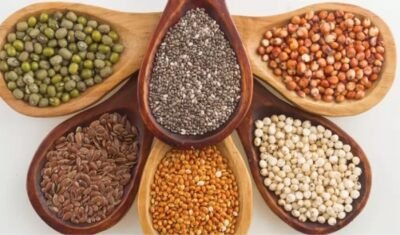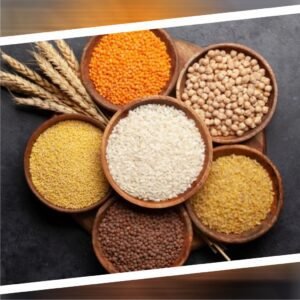Which Millet is Good for Diabetes – Exploring Different Millets

Which millet is good for diabetes? This question has gained prominence as more people seek alternative dietary options to manage diabetes effectively. In recent years, millets, a diverse group of small-seeded grasses, have emerged as a nutritional powerhouse and a potential solution for individuals looking to regulate their blood sugar levels. In this article, we will delve into the world of millets and explore which ones are particularly beneficial for individuals with diabetes.
Introduction
Diabetes, a chronic condition characterized by high blood sugar levels, requires careful management to prevent complications. Diet plays a crucial role in managing diabetes, and exploring alternative grains like millet can offer new avenues for creating balanced and nutritious meals.
Understanding Diabetes and Dietary Choices
People with diabetes need to be mindful of their carbohydrate intake as carbohydrates directly impact blood sugar levels. Choosing the right carbohydrates with a lower glycemic index can help regulate these levels more effectively. This is where millets come into the picture.

The Nutritional Value of Millets
Millets are powerhouses of nutrition. They are rich in fiber, vitamins, and minerals, making them a great addition to a diabetic diet. Additionally, millets have a lower glycemic index compared to refined grains, which means they cause a slower and steadier rise in blood sugar levels.
Might You Like – Is Sugarcane Juice Good for Diabetics?
Exploring Different Types of Millets
1. Foxtail Millet
Foxtail millet is a good source of essential amino acids and antioxidants. It helps in maintaining heart health and regulating cholesterol levels, which is crucial for individuals with diabetes.
2. Barnyard Millet
Barnyard millet is renowned for having a lot of fiber. It aids digestion, prevents constipation, and promotes a feeling of fullness, which can assist in weight management—a common concern for many people with diabetes.
3. Pearl Millet (Bajra)
Pearl millet, commonly known as bajra, is rich in iron and calcium. It also contains complex carbohydrates that provide sustained energy release, helping to prevent sudden spikes in blood sugar levels.
4. Finger Millet (Ragi)
Finger millet, or ragi, is an excellent source of dietary fiber and contains essential amino acids. It helps regulate blood sugar levels and can contribute to improved insulin sensitivity.
5. Sorghum Millet (Jowar)
Sorghum millet, or jowar, is packed with vitamins and minerals like niacin, magnesium, and phosphorus. Its high fiber content aids digestion and promotes a feeling of fullness.
Health Benefits of Millets for Diabetes Management
The consumption of millet has been linked to several health benefits for individuals with diabetes. These include better blood sugar control, improved heart health, and weight management. The diverse nutritional profiles of various millets contribute to their positive effects on diabetes management.
Incorporating Millets into Your Diet
Adding millet to your diet can be enjoyable and versatile. You can use millet flour for baking, cook them as a side dish, or even use them in salads. Experimenting with different millets can add exciting new flavors and textures to your meals.
Cooking Tips and Recipes
- Replace rice with foxtail millet for a diabetes-friendly alternative.
- Use barnyard millet as a base for porridge with nuts and fruits.
- Make delicious ragi dosas or rotis using finger millet flour.
- Prepare jowar salads with colorful vegetables for a nutrient-rich meal.
Potential Considerations
While millets offer numerous benefits, it’s important to remember that moderation is key. Consultation with a healthcare provider or nutritionist is advised before making significant dietary changes, especially for individuals taking diabetes medications.

Physical Activity and Diabetes Control
Incorporating regular physical activity along with a balanced diet rich in millet can further enhance diabetes management. Overall well-being is enhanced by exercise, which also increases insulin sensitivity.
Consulting a Healthcare Professional
Before making any substantial changes to your diet, especially if you have diabetes, it’s crucial to seek guidance from a qualified healthcare professional. They can offer tailored advice depending on your medical background and present state of health.
FAQs About Millets and Diabetes
Q: Can millet cure diabetes?
There is no cure for diabetes, but incorporating millets into your diet can contribute to better diabetes management.
Q: How should I cook millet for maximum benefit?
You can cook millets in various ways, such as boiling, steaming, or using them in baked goods. Experiment with recipes to find what suits your taste and lifestyle.
Q: Are millets gluten-free?
Yes, most millets are naturally gluten-free, making them a great option for individuals with gluten sensitivities.
Q: Can I consume millet daily?
Yes, millet can be consumed daily as part of a balanced diet. However, it’s essential to maintain variety in your food choices for overall nutrition.
Q: Are millets suitable for all types of diabetes?
Millets can be beneficial for various types of diabetes, but individual responses may vary. Consult your healthcare provider to determine the best dietary choices for your specific condition.
In conclusion, millets offer a promising avenue for individuals with diabetes to diversify their dietary choices and promote better health. With their nutritional richness and positive impact on blood sugar levels, incorporating different types of millet into your meals can be a tasty and beneficial choice. As always, consult with your healthcare provider before making significant changes to your diet to ensure they align with your individual health needs and goals.


